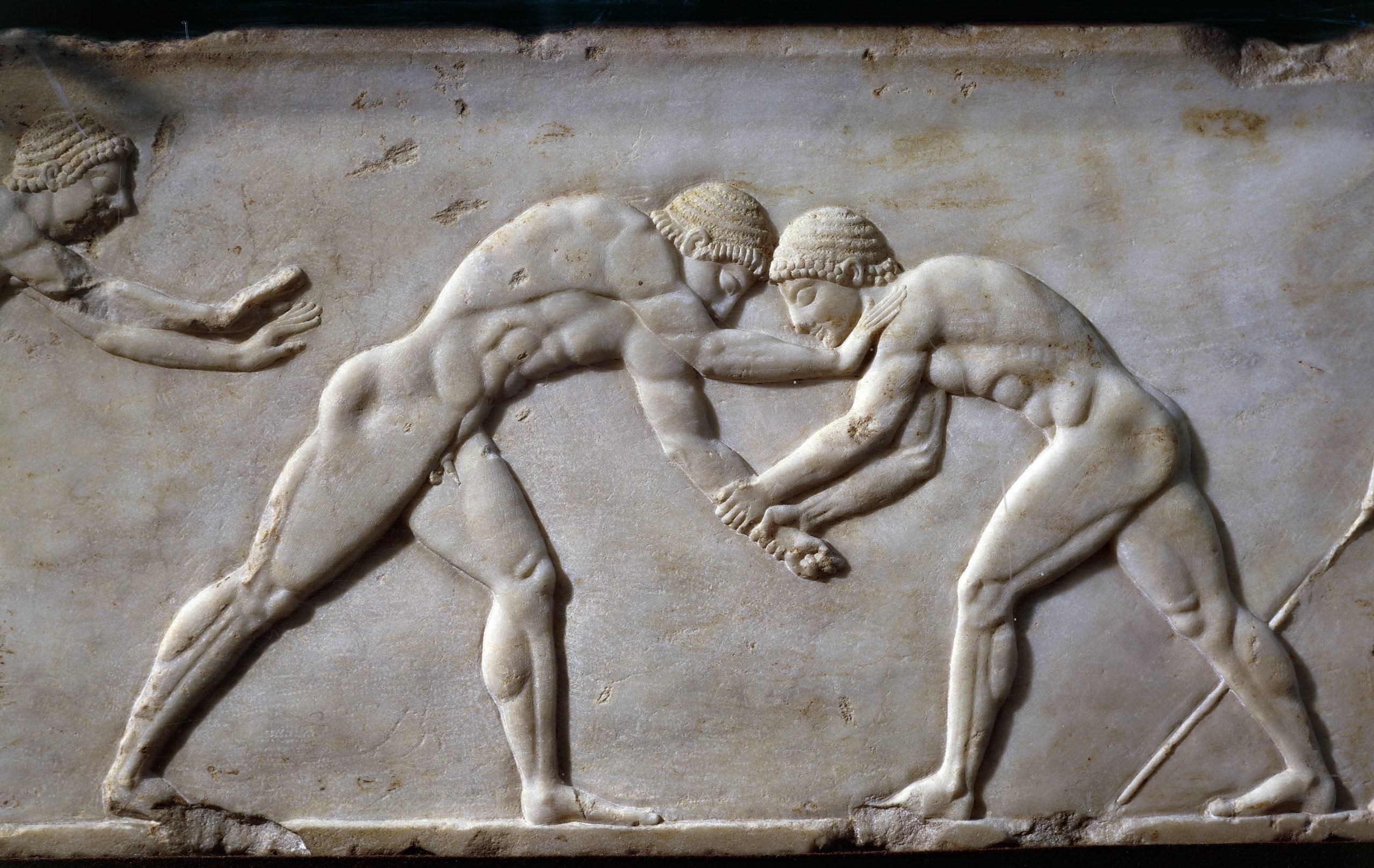
An inscription honoring the ancient wrestler Kaikilianos has been found in the ancient Turkish port city of Anemurium.
Anemurium is a 600 acres-wide archaeological district, close to the modern city of Anamur. The city dates back to the first century B.C.E when it was founded by the Phoenicians. Anemurium was inhabited consistently until the 7th century C.E as part of the Roman and then Byzantine Empires. The port city was a major settlement, complete with grand public baths, churches, and theaters.
Two archaeologists inspect the Anemurium stone base (2024). Image courtesy of IHA.
Its position on the southern coast of Turkey made it an important city for trade in and out of Asia and Europe, across both of which Turkey has territory. Excavations have been undertaken in Anemurium since 2018 and the site is one of the region’s most popular tourist attractions.
The Governor of Mersin—the southern province of Turkey where Anemurium is located—Ali Hamza Pehlivan has called the city “not only crucial for Mersin but for our entire country,” adding that it “attracts attention and sheds light on human history.”
The excavations have been led by professor Mehmet Tekocak on behalf of the Ministry of Culture and Tourism and the Selçuk University of Konya since 2018 as part of the “Heritage for the Future Project.” Archaeological work has been undergone at Anemurium uninterruptedly for the past 12 months. Four recent discoveries from Mersin sites have been added to the UNESCO list, and three more heritage sites—including Anemurium— are in the process of being proposed for UNESCO status.
An aerial view of Anemurium (2024). Image courtesy of IHA.
The 13-line inscription about the wrestler, which was found complete and intact measuring 120 cm (47 inches) by 50 cm (19 inches) and weighing half a ton, is believed to be 2,000 years old. The condition of the inscription makes it the first discovery of its kind for the region. The stone was found in the Harbor Bath where last year a Roman period statue was found. Tekocak said “Just like last year, the Harbor Bath has provided us with significant discoveries.” The discovery suggests that the city was important as more than just a maritime trade centre.
The inscription praises Kaikilianos for having won the second edition of a wrestling competition held in the city every five years. Anemurium may have been a key location for sports in the region, with a palaestra—an ancient wrestling school—among its ruins which would have offered training to ancient athletes. Tekocak posited that “Olympic-level competitions” could have been taking place in the area, saying that the inscription marks a “significant development for us and offers new insights into the athletic culture of ancient Anemurium.”
The inscription is carved into what researchers believe may have been the base of a statue of the athlete, made in honor of the ancient wrestler. Pehlivan said that the wrestling competition won by Kaikilianos is evidence of the vibrancy of the period in the city, and that “awarding athletes who placed in these competitions highlights the value placed on sports.”
An aerial view of Anemurium’s coastline (2024). Image courtesy of IHA.
The inscription, made in ancient Greek script, gave details about the wrestling competition, even including the name of its organizer. Tekocak told IHA News: “We learned that someone named ‘Flavianus’ organized a competition every five years in his name. In the second of these competitions, ‘Kaikilianos’ won the adult category in wrestling. This athlete not only won a prize but was so significant that an inscription was made in his honor. A statue of the athlete likely once stood atop this inscription, perhaps this athlete competed in other events and won more awards elsewhere”.
This discovery comes after a summer of major archaeological finds in Turkey including huge megaliths, unique millefiori glass panels, and a bronze-age shopping list.